I'm drawing a custom diagram of business objects using .NET GDI+. Among other things, the diagram consists of several lines that are connecting the objects.
In a particular scenario, I need to shorten a line by a specific number of pixels, let's say 10 pixels, i.e. find the point on the line that lies 10 pixels before the end point of the line.
Imagine a circle with radius r = 10 pixels, and a line with start point (x1, y1) and end point (x2, y2). The circle is centered at the end point of the line, as in the following illustration.
How do I calculate the point marked with a red circle, i.e. the intersection between circle and line? This would give me the new end point of the line, shortening it by 10 pixels.
Solution
Thank you for your answers from which I was able to put together the following procedure. I named it LengthenLine, since I find it more natural to pass a negative number of pixels if I want the line shortened.
Specifically, I was trying to put together a function that could draw a line with rounded corners, which can be found here.
public void LengthenLine(PointF startPoint, ref PointF endPoint, float pixelCount)
{
if (startPoint.Equals(endPoint))
return; // not a line
double dx = endPoint.X - startPoint.X;
double dy = endPoint.Y - startPoint.Y;
if (dx == 0)
{
// vertical line:
if (endPoint.Y < startPoint.Y)
endPoint.Y -= pixelCount;
else
endPoint.Y += pixelCount;
}
else if (dy == 0)
{
// horizontal line:
if (endPoint.X < startPoint.X)
endPoint.X -= pixelCount;
else
endPoint.X += pixelCount;
}
else
{
// non-horizontal, non-vertical line:
double length = Math.Sqrt(dx * dx + dy * dy);
double scale = (length + pixelCount) / length;
dx *= scale;
dy *= scale;
endPoint.X = startPoint.X + Convert.ToSingle(dx);
endPoint.Y = startPoint.Y + Convert.ToSingle(dy);
}
}

